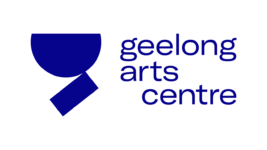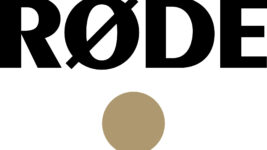News
17 Apr 2024
PayPal Melbourne Fashion Festival 2024
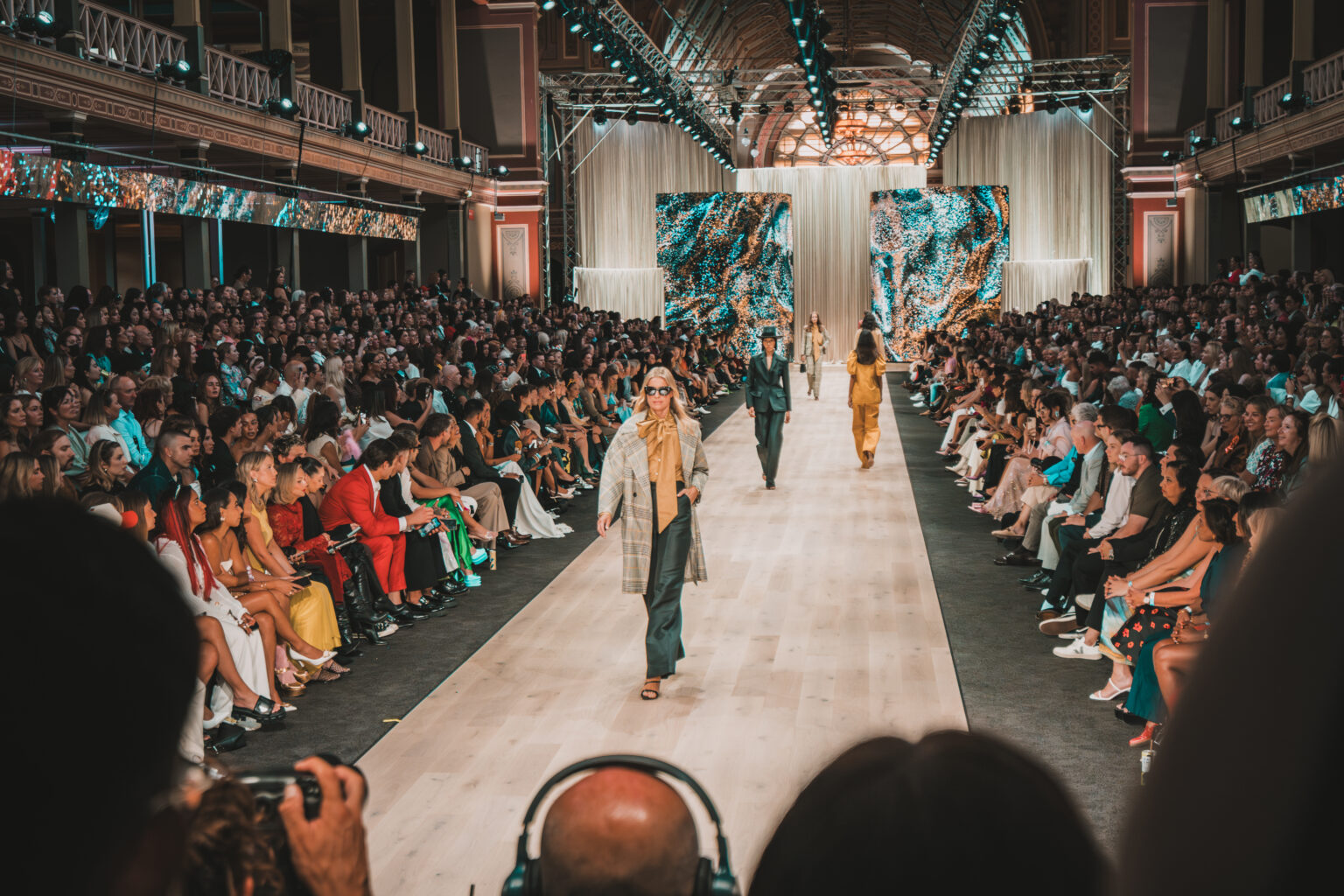
Subscribe to CX E-News
The 2024 PayPal Melbourne Fashion Festival sashayed into town on 24 February, running more than 100 events over 15 days. The official home to the festival was the world heritage-listed Royal Exhibition Building (REB) in Carlton, where premium runway shows ran to 3,000 fashionistas per night. Outside the REB, the Fashion Forecourt served drinks and gourmet food while DJs played tunes, and activations brought the area to life. At this heart of the festival, Harry the hirer Productions (Harry’s) supplied every light, screen, speaker, marquee and chair.
Marcus Pugh, Technical Director and Designer for Harry’s Productions, worked on the design for both the forecourt and premium runway shows with Geraldine Frater-Wyeth from Event Gallery, producer of the premium runways. Hugh Taranto stepped up as lighting designer for the runway shows, while Justin Timms designed the audio system. While Harry’s have been supplying the forecourt for more than a decade, this was only their second time supplying the premium runways.
“From 4 to 9 March, we were running two premium runway shows each day, and a third on the Saturday,” Marcus shares. “We did 13 totally different runway shows over a six-day period. Not only were we supplying every piece of equipment, we were also making the artistic choices on how to light the runway shows.”
At the design stage, there was little information on what each show would contain, so the design needed to be as nimble as possible. “Almost all of it was designed before we had a full brief on all the shows,” Marcus reveals. “Between Geraldine Frater-Wyeth, Hugh Taranto and myself, we came up with the overall design and look. For the premium runways, that included a 6 × 6 metre wide silver curved wall at the back, with two smaller 3 × 3 metre curved walls at the front that could be flipped around to be convex or concave.Then we put in two curved 5 × 5 metre LED walls in the middle, and they became digital set pieces.”
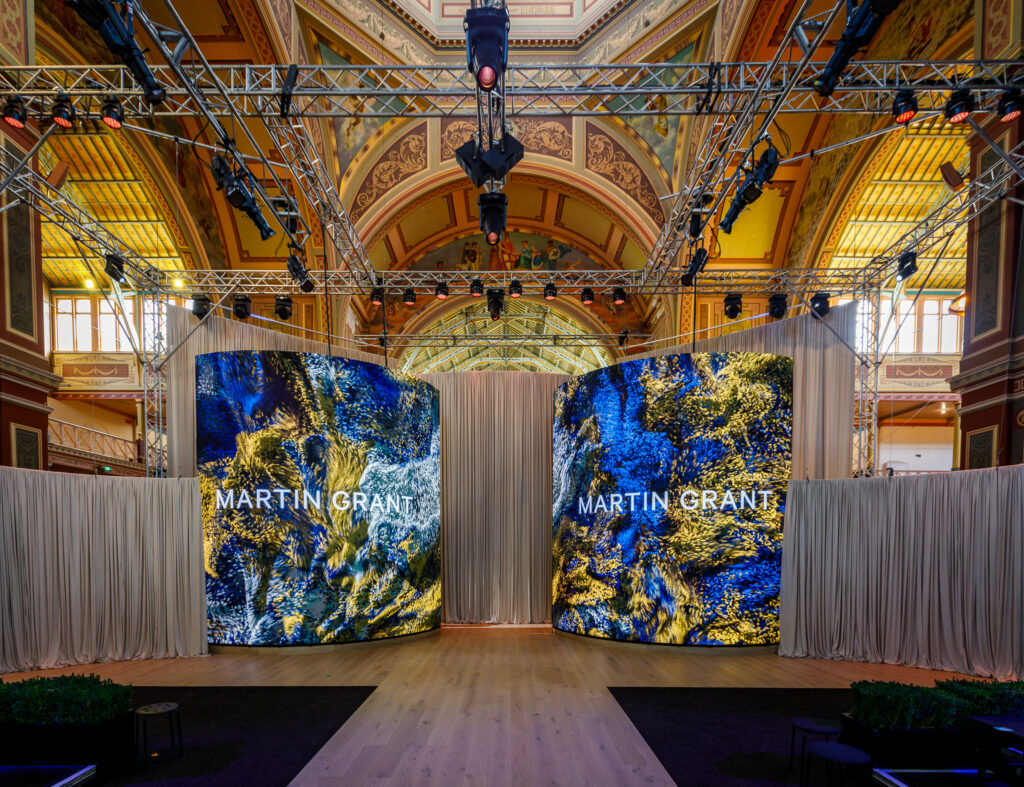
“The design was all about creating flexibility,” continues Marcus, “and being able to offer as many different looks as possible for each one of those 13 runway shows. We had tricks up our sleeve that allowed us to create a really distinctive look and feel for each show without having to put up an entirely new rig every time.”
Marcus and the team did get a little prep time during the day before that night’s shows. “Each designer would bring out a sample outfit,” he says. “Then, prior to each one of the shows, we had walkthroughs with the models.”
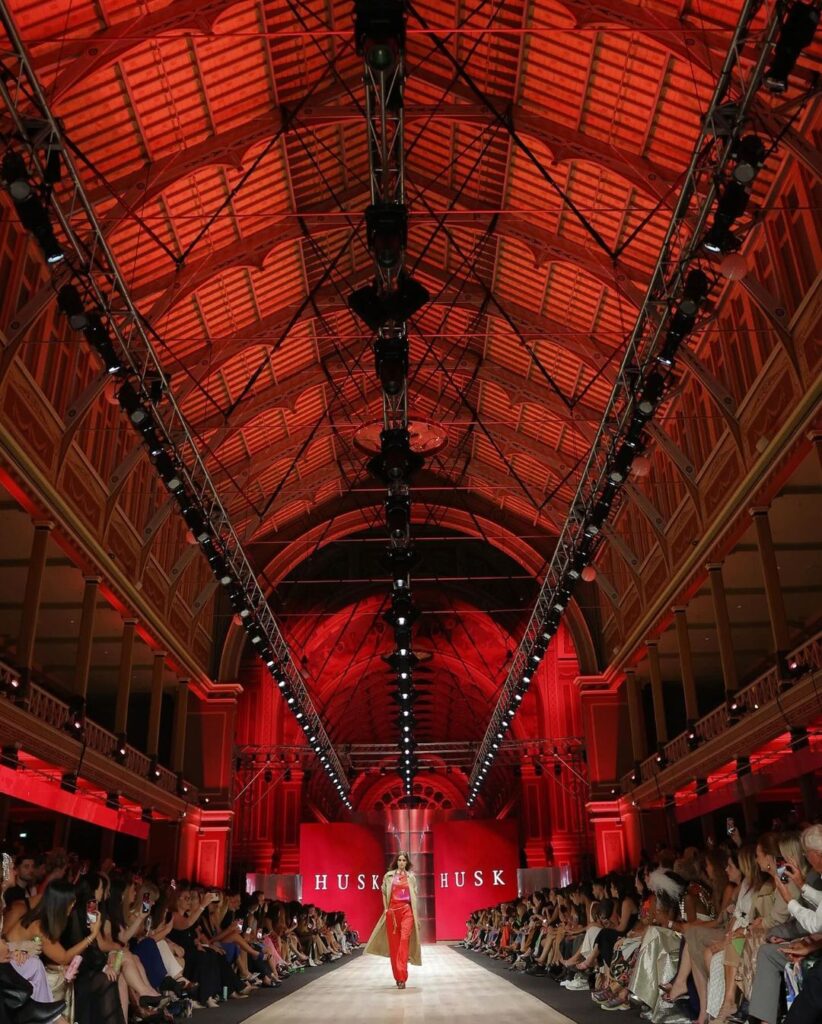
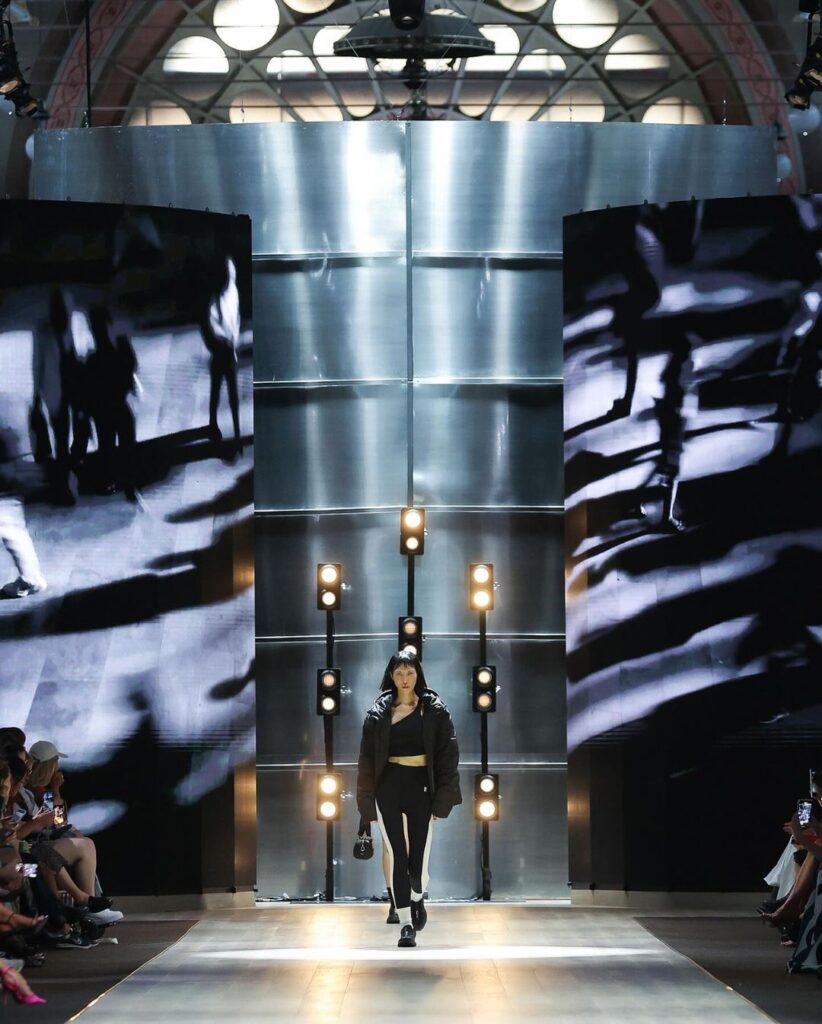
Working in the REB’s heritage-listed confines provided both design inspiration and challenge. “We had a concept that we were creating a juxtaposition between the technology and the heritage architecture of the building,” elaborates Marcus. “There were lots of meetings and five or six different versions of the design to get to the point where we thought it was flexible enough, while staying within budget. One big change from last year was that the venue banned the use of haze. When it became official just after New Year that we weren’t going to be able to use haze, Hugh and I changed things around and gave the show a cleaner, more ‘European’ design.”
With operational and physical restrictions on cabling, Harry’s used LumenRadio’s Stardust, eight Universe DMX/RDM transmitters and LumenRadio Aurora single Universe DMX/ RDM transmitters to get data to some of the lighting rig; “There were areas where we just couldn’t get cabling,” Marcus admits. “It was great to get data to lighting on the set, lighting in the foyer and also out in the forecourt. I love the LumenRadio system!”
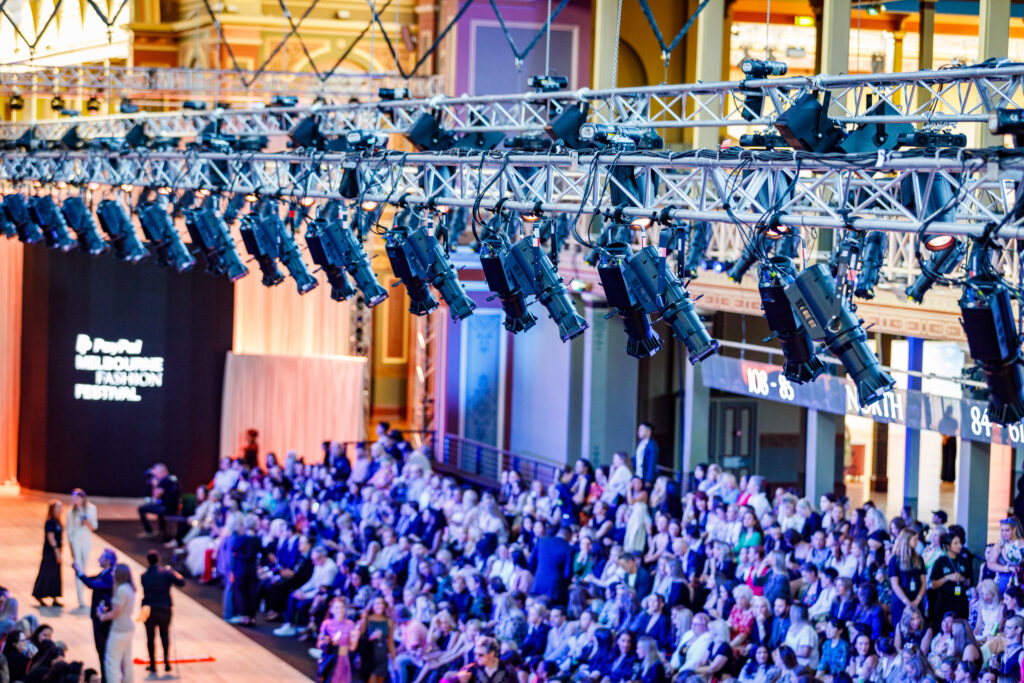
Harry’s utilised its stock of VuePix ART Series 3mm pitch LED panels, running with Brompton LED processing, to power the vast number of LED screens both inside and outside the REB. “The 5 x 5 metre LED digital sets we used inside, along with all the screens on the forecourt, were VuePix,” confirms Marcus. “There were three LED screens out on the forecourt as part of different activations, and a main screen out on the plaza that showed highlights of the runway shows, and advertising.”
The heritage listing and restrictions also came into play when contemplating audio design. “There are new audio restrictions at the REB, brought in to help preserve the building,” Marcus explains. “They’ve got vibration monitors set up in the venue. Our new audio lead, Justin Timms, designed a distributed system using d&b audiotechnik T10s, which can be used as a line source or point source. We flew them along the catwalk truss, using them as a line source. We had eight d&b audiotechnik B4 subwoofers running in cardioid mode to keep the energy focused forward. We had to ‘tools down’ for an hour during bump-in to do full audio testing, running the system as hard as we could, to get the vibration readings out of their sensors. That way, we knew where our noise ceiling was. We managed to get the coverage to 104dB average across the seating banks, with a variation of only 3dB.”
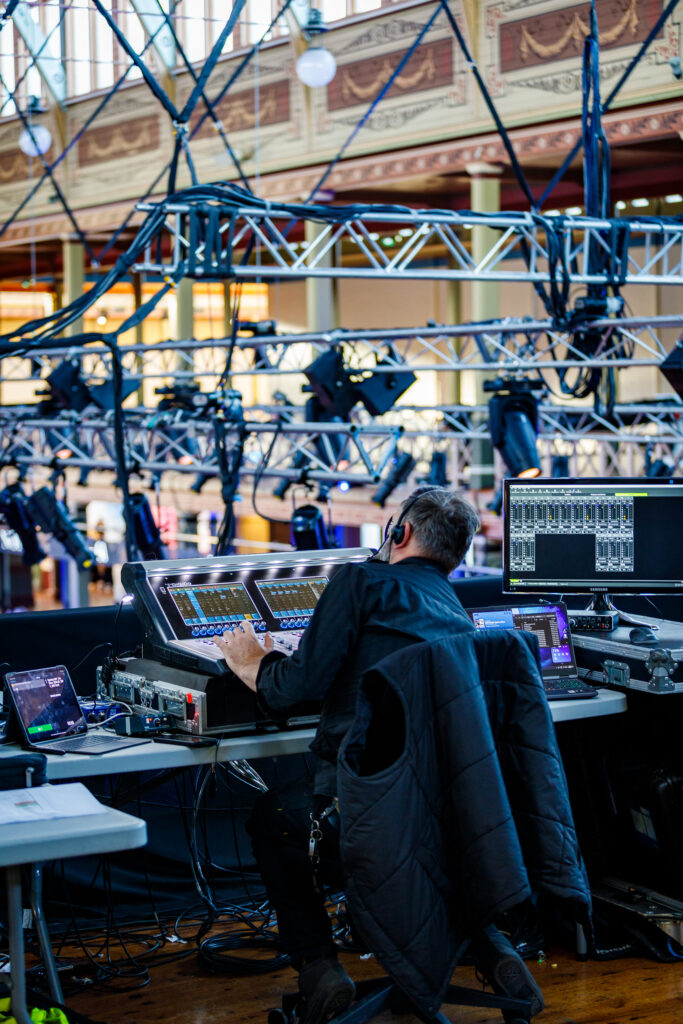
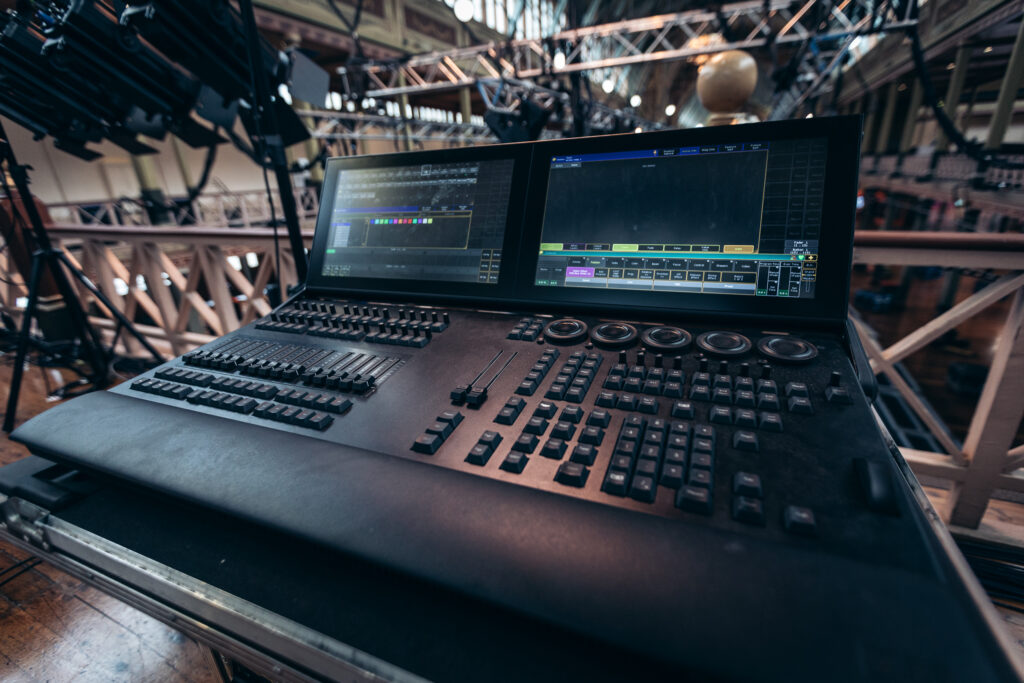
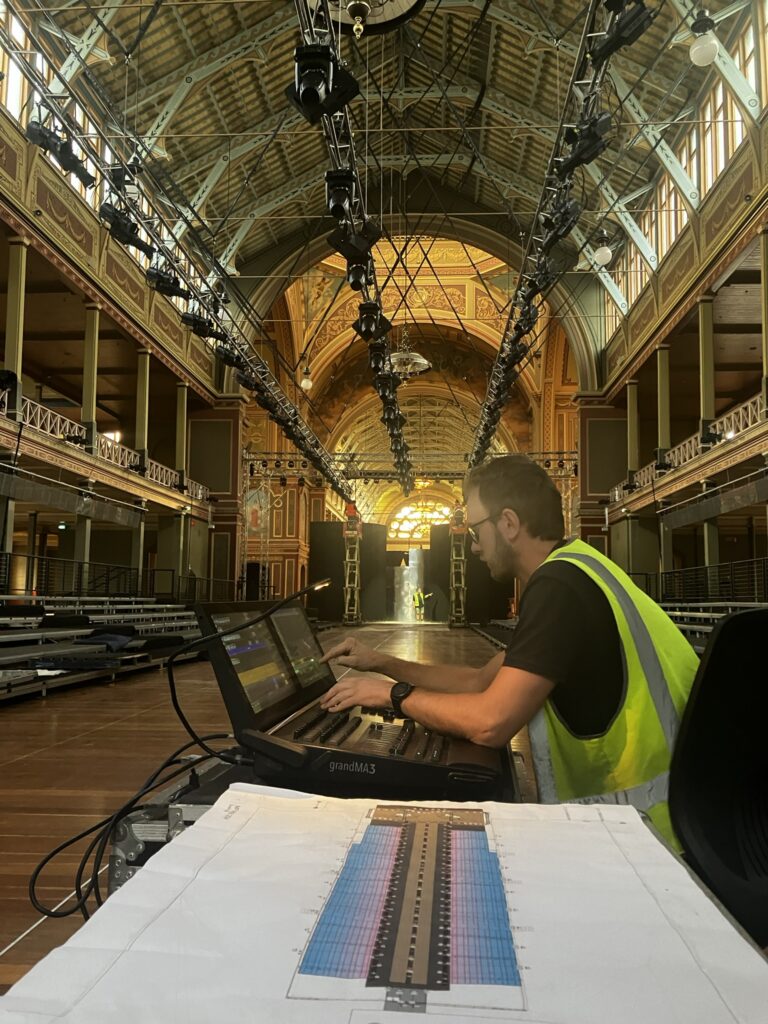
THE CREW
Project Managers: Wade Cameron (Premium Runway shows), John ‘Disco’ Darbisi (MFF Plaza), Carl McKinnon (Satellite Runways and Corporate Shows)
Lighting Designer: Hugh Taranto
Lighting System & Tech Designer: Ollie Pool
Video System Designer: Jensen Evans
Video Operator: Blair Nicholson
Video System Tech: Daniel Thompson
Audio System Designer: Justin Timms
Audio Operator: Jared Hansford (Premium Runways)
Audio Operator: Harry Scott (MFF Plaza)
Technical Director/Designer: Marcus Pugh
THE GEAR
Lighting
126 x Chauvet Ovation Profiles 40 x Martin MAC One
24 x Robe Esprite
34 x Martin MAC Aura
20 x Chauvet Storm 2 BeamWash 30 x Chauvet Outcast 2X Wash 50 x LED Fresnels
32 x TourPro Soft Panels 48 x NikLite IP65 Wash 6 x Ayrton Diablos
28 x Astera AX9 32 x Astera AX5 48 x Astera AX1
24 x Astera Titan Tubes 2 x LumenRadio Stardust 4 x LumenRadio Aurora 1 x grandMA3 full-size
1x grandMA3 light
2 x grandMA3 compact XT
Controlled over 50+ Universes of DMX, over 20,000 individual channels of DMX
Audio
Justin Timms designed a distributed audio system that helped to keep the PA within the vibration limits in the Royal Exhibition Building while giving the audience a full- bodied audio experience. The main PA consisted of:
2 x DiGiCo S21
24 x d&b audiotechnik T10 run as point source
8 x d&b audiotechnik B4 subwoofers
Driven by d&b audiotechnik D80 amplifiers
Less than 3dB variation in coverage across 600 square metres of audience
Video
More than 100 square metres of LED screen (13,107,200 individual pixels) using VuePix ART Series 3mm pitch LED panels
Brompton LED processing
Subscribe
Published monthly since 1991, our famous AV industry magazine is free for download or pay for print. Subscribers also receive CX News, our free weekly email with the latest industry news and jobs.




